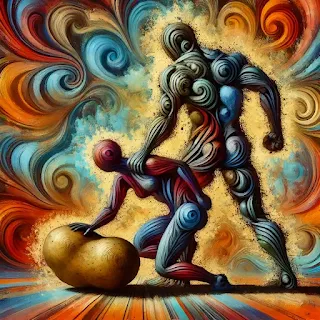Colonialism has been one of the most powerful and destructive forces in global history, with long-lasting consequences that continue to impact modern societies today. During the 19th and 20th centuries, colonial powers expanded their influence by systematically exploiting the natural and human resources of the regions they conquered. These practices devastated local economies, created social inequalities, and established enduring relationships of dependency that continue to shape living conditions in many parts of the world.
Exploitation during the colonial period was not limited to the seizure of land and resources. It also involved stripping local populations of their autonomy and subjecting them to regimes that operated for the benefit of the colonizers. For instance, the extraction of agricultural and mineral resources in the colonies was accompanied by policies ensuring that local populations remained economically dependent and politically powerless (Acemoglu, Johnson, & Robinson, 2001). These policies shaped the economic and social structures in former colonies, leading to chronic conditions of poverty, inequality, and dependence.Although colonial empires officially ended in the 20th century, the social and economic consequences of these practices remain pronounced. Many of the formerly colonized populations seek better life opportunities by migrating to wealthier countries, which are often the former colonial powers. However, the hope for a fresh start often turns into disappointment, as these migrants face new forms of exploitation and marginalization in their host societies.
Despite the existence of modern legal frameworks promoting equality and protecting human rights, the reality for many migrants is quite different. Host societies may enact laws that recognize equal rights for all, but deeply rooted prejudices and social inertia often lead to discriminatory practices and unequal treatment. Migrants often end up in low-paying jobs, with limited access to social services and restricted rights, while being targeted by racist behaviors and stereotypes (Kymlicka, 2015).
These societies, despite having progressive laws, have not fully managed to overcome their colonial legacies. The lag in aligning social realities with legal changes creates a gap where inequality and exploitation continue to thrive. Research shows that the failure to integrate migrants is linked to this disparity between legal principles and social practices (Joppke, 2004). Migrants often face walls of social exclusion that are reinforced by deeply rooted social prejudices and a slow process of cultural integration.
This failure of integration and the ongoing exploitation represent the "second frying" in our metaphor. Migrants, who have already experienced exploitation and oppression in their countries of origin, seek a new path to prosperity, only to find themselves trapped in similar conditions of exploitation in host societies. The frustration and sense of injustice that arise from these experiences can lead to extreme behaviors and views, as migrants seek ways to express their opposition to a system that excludes them (Gurr, 1970).
The literature suggests that feelings of exclusion and social injustice enhance the tendency toward radicalization and extremism. As Roy (2017) argues, young migrants who experience continuous discrimination and social exclusion are at greater risk of turning to extremist groups that offer a sense of purpose and community, responding to experiences of alienation and oppression. Sageman (2004) also notes that joining extremist groups can be seen as a way to assert dignity and justice when host societies fail to provide equal opportunities and fair treatment.
To address these challenges, it is crucial to recognize the depth of historical exploitation and the contemporary forms of injustice experienced by migrants. The inability of societies to fully align with progressive legal principles and eliminate systemic inequalities has serious consequences for social cohesion and security. A meaningful approach must include the implementation of policies that not only recognize the rights of migrants but also ensure their full and genuine integration into host societies.
The "double frying" of exploitation—from colonialism in the countries of origin to marginalization in the host countries—exacerbates inequalities and strengthens the potential for extremist responses. A more holistic and just approach is needed to address these roots of injustice, promoting peace and security in a world that respects the rights and dignity of all people.
References:
- Acemoglu, D., Johnson, S., & Robinson, J. A. (2001). The Colonial Origins of Comparative Development: An Empirical Investigation. American Economic Review, 91(5), 1369-1401.
- Gurr, T. R. (1970). Why Men Rebel. Princeton University Press.
- Castles, S., & Miller, M. J. (2009). The Age of Migration: International Population Movements in the Modern World. Palgrave Macmillan.
- Joppke, C. (2004). The Retreat of Multiculturalism in the Liberal State: Theory and Policy. The British Journal of Sociology, 55(2), 237-257.
- Roy, O. (2017). Jihad and Death: The Global Appeal of Islamic State. Hurst.
- Sageman, M. (2004). Understanding Terror Networks. University of Pennsylvania Press.
- Kymlicka, W. (2015). Multicultural Citizenship: A Liberal Theory of Minority Rights. Oxford University Press.







